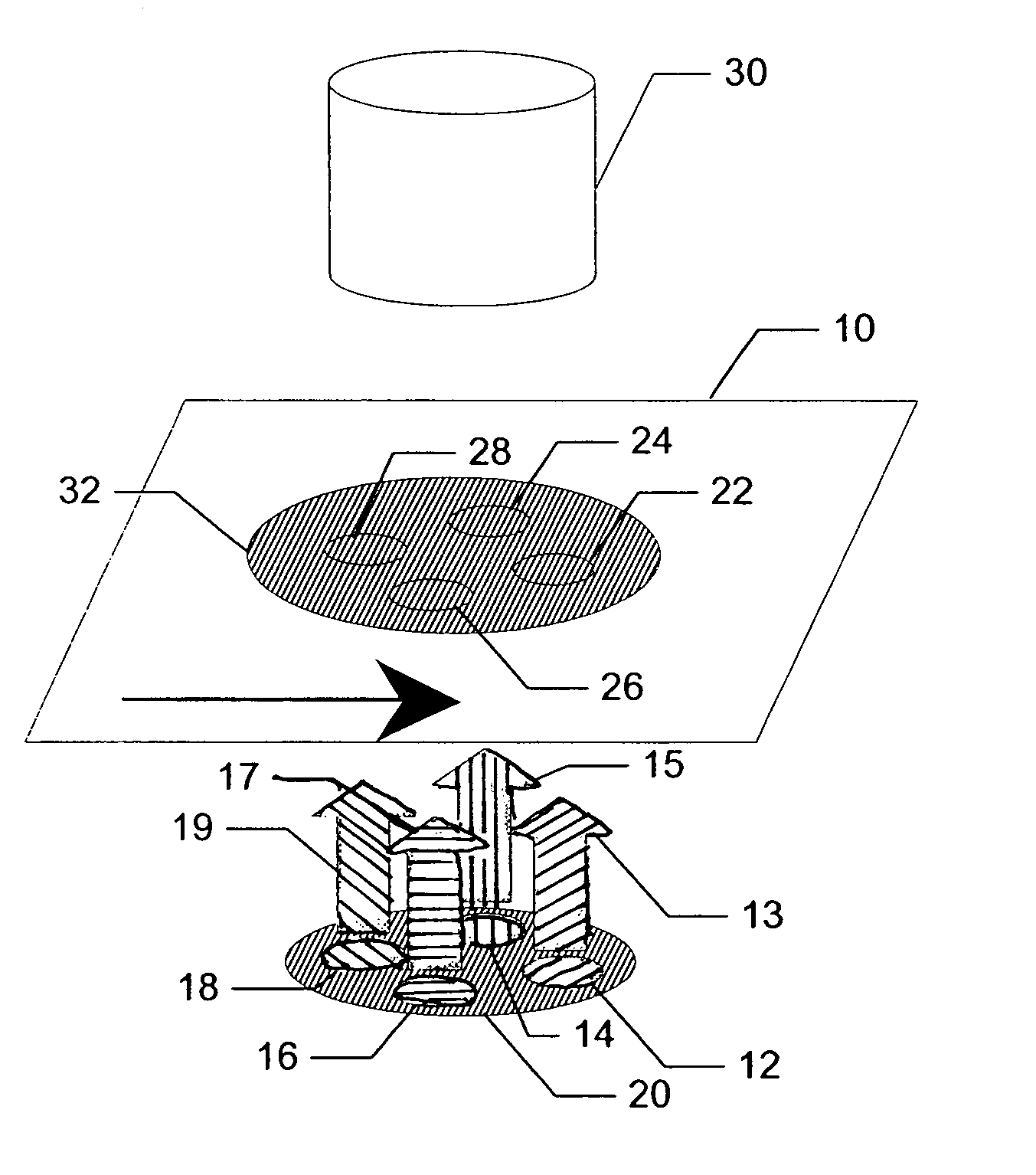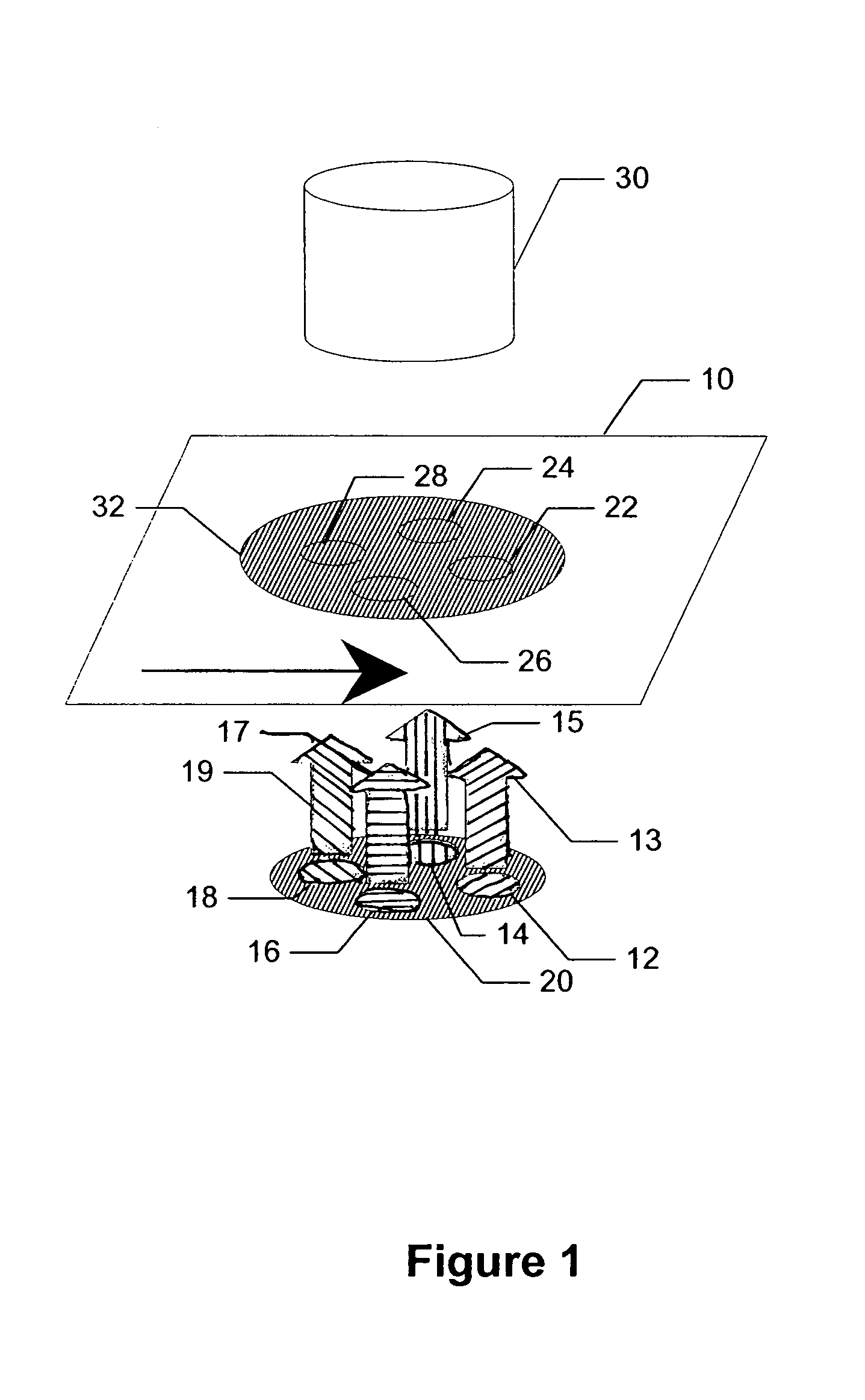Measuring fiber orientation by detecting dispersion of polarized light
a technology of polarized light and fiber orientation, which is applied in the direction of optical radiation measurement, instruments, papermaking, etc., can solve the problems of dimensional instability, twisting, curling, and skewing, defective products, etc., and achieves higher resolution, simple and robust construction, and reliable measurement results.
- Summary
- Abstract
- Description
- Claims
- Application Information
AI Technical Summary
Benefits of technology
Problems solved by technology
Method used
Image
Examples
Embodiment Construction
[0056]The present invention relates to methods and devices for calculating the fiber orientation in nonwoven materials especially where the material is in the form of a moving web, film or sheet. The fiber orientation of the whole thickness of the web of the web can be measured. The fiber orientation measurements can be expressed as one or more different parameters that are used in controlling the papermaking process and / or characterizing the properties of the product. The parameters include, for instance: average fiber orientation angle and fiber orientation anisotropy index. In addition, the fiber orientation measurements from both sides of the web can yield information regarding curl and twist deformations of the web, e.g., paper.
[0057]While the invention will be illustrated in measuring fiber orientation of paper, it is understood that the invention can be employed to analyze fiber orientation in a variety of products that are formed from non-woven fibrous materials including, f...
PUM
| Property | Measurement | Unit |
|---|---|---|
| wavelengths | aaaaa | aaaaa |
| wavelengths | aaaaa | aaaaa |
| wavelength range | aaaaa | aaaaa |
Abstract
Description
Claims
Application Information
 Login to View More
Login to View More - R&D
- Intellectual Property
- Life Sciences
- Materials
- Tech Scout
- Unparalleled Data Quality
- Higher Quality Content
- 60% Fewer Hallucinations
Browse by: Latest US Patents, China's latest patents, Technical Efficacy Thesaurus, Application Domain, Technology Topic, Popular Technical Reports.
© 2025 PatSnap. All rights reserved.Legal|Privacy policy|Modern Slavery Act Transparency Statement|Sitemap|About US| Contact US: help@patsnap.com



